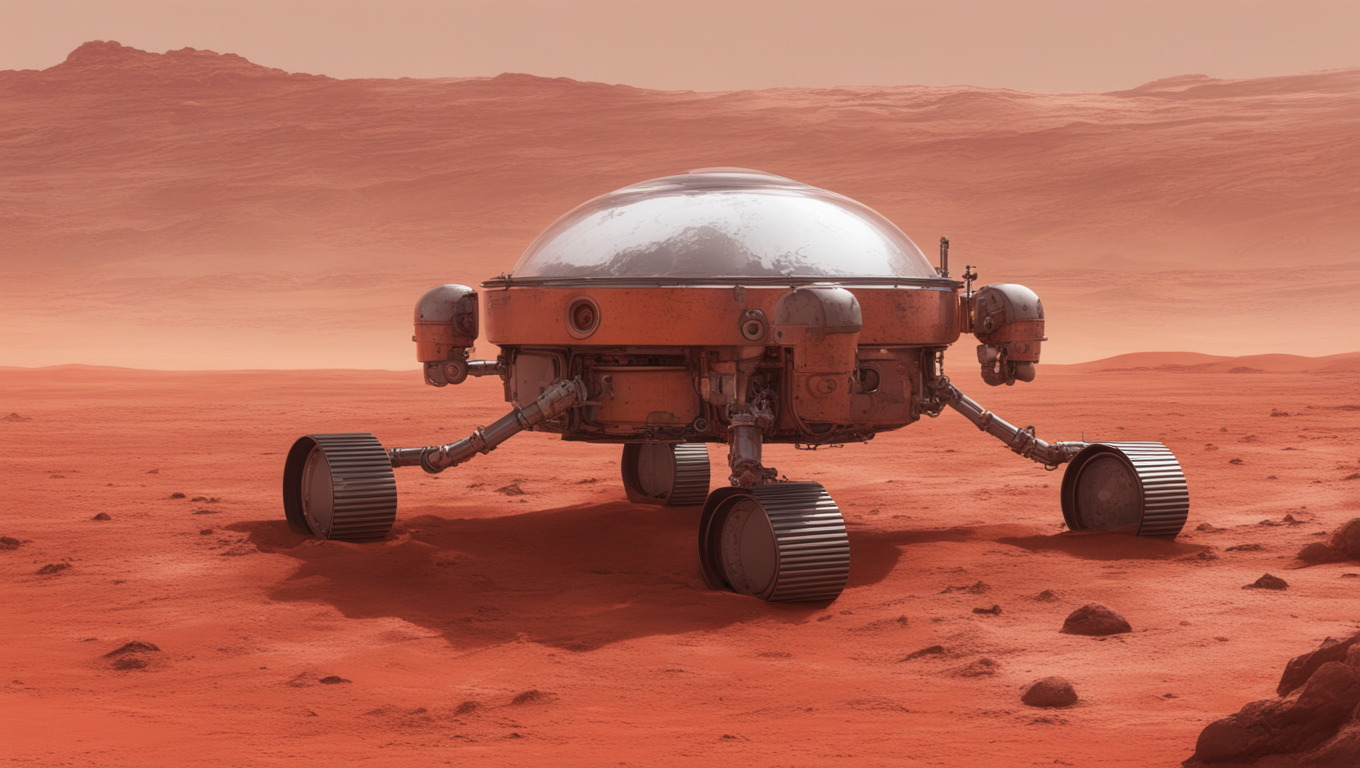Robots and artificial intelligence have become an integral part of our daily lives. They design new medicines, help us with our queries (even though sometimes they get it wrong), and act as our personal digital assistants. But their widespread utilization doesn’t stop there; these intelligent machines are now making their way to the domain of space exploration. The latest revolutionary development in this regard is an AI-powered robot that has the capability to generate oxygen on Mars.
This groundbreaking robot, developed by a team of researchers led by Jun Jiang at the University of Science and Technology of China in Hefei, can produce oxygen using only materials found on Mars. The incredible results achieved by this mechanical chemist have recently been published in the journal Nature Synthesis. As we strive towards advancing human space exploration, the focus is now shifting towards utilizing local materials in order to reduce the burden of launching and carrying everything from Earth. Oxygen, being one of the most vital resources, holds great importance in this pursuit.
The AI-equipped robot takes the form of a large box, about the size of a refrigerator turned on its side. Equipped with a robotic arm, it can manipulate materials effectively. The researchers provided the robot with five meteorites, either directly from Mars or with compositions resembling the Martian surface. The robot then autonomously utilized acid and alkali to break down the Martian ore and analyze its chemical composition. Once it had a clear understanding of the available resources, it meticulously searched through a staggering 3.7 million possible combinations to find a catalyst that could facilitate the release of oxygen from water, known as an oxygen-evolution reaction catalyst.
Importantly, this entire process, from material preparation to catalyst synthesis, testing, and the search for the optimal formula, was completed without any human intervention. The team estimated that this extraordinary robot could produce 60 grams of oxygen per hour using just one square meter of Martian dirt. It is worth mentioning that while this AI-powered robot’s feat is remarkable, it is not the only experiment focused on oxygen production on Mars. NASA’s Mars Oxygen In-Situ Resource Utilization Experiment (MOXIE), onboard the Perseverance rover, has already successfully generated oxygen from Martian air on the Red Planet.
However, the significance of this AI-powered chemist lies not only in its ability to produce oxygen but also in its capacity to find paths towards achieving various target compounds using available materials. It has the potential to synthesize a wide range of catalysts and compounds, depending on the requirements. It’s like asking a skilled chef to make a delicious pizza using whatever ingredients they find in your pantry and freezer. Mars lacks breathable oxygen, but it offers an abundance of water ice at the poles and an endless supply of rocks everywhere else. With the assistance of an artificially intelligent robotic chemist, these two ingredients are all we need to create a plentiful supply of breathable air on Mars.
While this development opens up countless possibilities for future space exploration and colonization, it is crucial to ensure the robot’s reliability and safety. We must hope that this intelligent machine does not turn hostile when we rely on it most. The fusion of AI and robotics keeps pushing the boundaries of what is possible, and we can only imagine the extraordinary advancements that lie ahead as we embark on our journey to conquer the mysteries of the cosmos.





Use the share button below if you liked it.